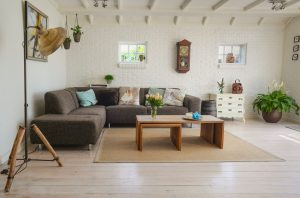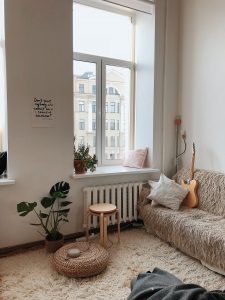There is an increasing number of customers trying to integrate sustainability into their homes. Home Interior Designers have a huge influence on the sustainability of an environment due to their influence over the products and materials that will be placed into their clients’ homes.
Following sustainable interior design fundamentals, designers decrease the negative ecological impact of our society and are privy to developing a better, more sustainable future.

-
Designing for optimal energy efficiency
Buildings are responsible for a major share of the planet’s greenhouse gas emissions, due to energy consumption. Architects and interior designers can improve a building’s energy efficiency by lowering the energy use required for lighting, heating, operating appliances, supplying renewable energy and non-carbon-based alternatives for construction.
As the majority of the building’s heat flows through windows, so it is essential that the installed windows are of premium quality and supply decent insulation. Window coverings, blinds and colours enable citizens to restrain the building’s temperature within an energy efficient manner of shutting and opening them as necessary.
Carpets are excellent thermal insulators; based on estimations, a rug retains up to 10% of an area’s warmth. They are great to save on heating energy.
To conserve energy on light, a great deal could be accomplished by simply choosing the ideal room colours. Lighter shades reflect extra light, while rooms with walls that are darker require more solid lighting. Using reflective surfaces increases the quantity of lighting in a space by bouncing it around, decreasing dependence on synthetic light.
-
Layout for low ecological impact
From a sustainability perspective, it is extremely important to select products and materials with the lowest environmental effect. Organic substances (e.g. timber, wool, organic stones) are the obvious option, but we should not overlook that natural resources will need to be treated sensibly. Choose materials which are rapidly renewable (like fast bamboo), and therefore are expressed in an environmentally responsible manner. You will find tags, standards and certificates that provide credible information regarding the goods’ source and will help you identify eco-friendly products. An FSC tag on wood goods ensures that the timber used in the item was harvested.
-
Reducing waste
Interior stylists have a great deal of power in their hands in regards to waste reduction, and thus a large duty to behave responsibly. The world’s precious resources are restricted, so the mindset of shedding merchandise the moment they go out of fashion and substituting them with those which are trendy is no more justifiable.
Luckily, the area of style is becoming more and more conscious of the need for sustainable thinking and is undergoing an increasing interest in renewable tendencies, like recycling, upcycling and repurposing.

-
Standing the test of time
To stop substances and goods becoming lost too frequently, interior designers need to think about the lifespan of almost any décor and design that they intend to utilize, particularly for those components that experience a great deal of wear and tear, like flooring. The objective of designing for durability would be to look durable, create timeless spaces that suppress the temptation to alter the entire layout every year or two. The very best approach to is to pick quality over quantity, classics more stylish, and simplicity/functionality over vases.
Over time, however, individuals will develop and change, and their surrounding spaces need to develop together and reflect those modifications. In anticipation of this, interior designers need to think about the flexibility of spaces and just how well are they can be adapted to match the changing demands of the people using them.
With Armadillo rugs, it makes it easy to lift and move about as well as give a fresh face to a space without having to demolish and replace the current flooring.
-
Creating healthy environments
To enhance indoor air quality, it is essential that the atmosphere in an area can frequently circulate and stay fresh. Carpets enhance air quality by dividing the dust particles in the atmosphere and holding them till vacuumed.
With routine, sustainable carpet cleaning, the environment stays healthy and free from allergens and germs within dust particles. Because of this, they lead to reduce air pollution from the environment and lower the possibility of medical issues.
Carpets can also be exceptional noise insulators, they help reduce sound by absorbing noise vibrations — a significant advantage to the well-being of residents and occupants.
Exposure to natural lighting is just another valuable aspect of both physical and mental wellness. This is particularly important for offices, as organic light decreases stress and boosts productivity. The biophilic layout is a sort of layout that recognizes this requirement to incorporate natural components to our buildings and interiors and intentions to renew the link between nature and humans.
We expect that these principles will become paramount to style in general. Architects and interior designers will be the founders of the spaces we live in and must constantly be guided by renewable and biophilic strategies — to help treat the environment, and concurrently, ourselves.
